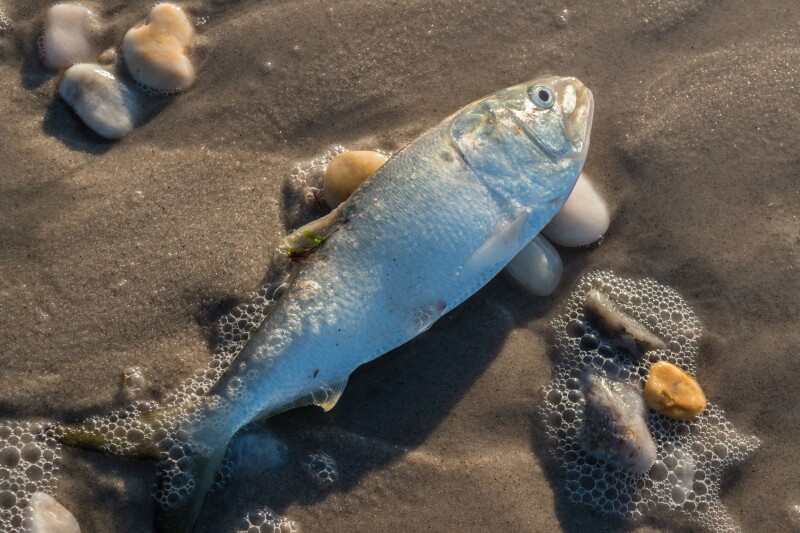On September 4, state officials discovered around 24,000 dead menhaden or pogies in the Baltimore Harbor, a vital species in the Chesapeake Bay ecosystem. This large fish kill is a reminder of the severe environmental challenges the local waterways face, driven by seasonal temperature changes, pollution, and nutrient overloads.
The Chesapeake Bay Foundation (CBF) educators first observed troubling signs on September 3, when a dense algal bloom altered the water’s color and introduced a sulfur-like smell. By the following day, the Harbor was filled with floating dead pogies. This large-scale die-off follows a smaller fish kill in late August, which involved about 1,700 fish, highlighting the Bay area’s environmental issues.
The fish kill has been primarily caused by thermal inversion, where cooler, denser water sinks to the bottom, causing warmer water and sulfur bacteria to rise. These bacteria consume oxygen rather than produce it, creating a sulfur odor and harmful conditions for fish.
The situation is worsened by algae flourishing on nutrient-rich stormwater runoff and warming waters due to climate change. A recent EPA report indicates that Maryland has not addressed polluted stormwater runoff, which undermines overall Bay health and raises the risk of further fish kills.
Similar concerns have been echoed by blue crabbers who have voiced frustration over insufficient wastewater treatments impacting their fisheries. In a recent National Fisherman article, these crabbers face challenges due to the discharge of untreated or inadequately treated wastewater into coastal waters, exacerbating problems like algal blooms and dead zones.
Gussie Maguire, CBF Maryland Staff Scientist, emphasized in a statement posted to their website the urgency of addressing these environmental stressors, “It's crucial that we limit further stressors on our beloved aquatic species. Menhaden are the bedrock of the Bay ecosystem, supporting many other species’ diets. They already face immense pressure from industrial fishing lower in the Chesapeake Bay. Reducing nutrient pollution from stormwater runoff in Maryland would help expand the habitat for these critically important fish. The Bay’s menhaden are now pinched between industrial fishing and dead zones.”
Maguire’s concerns are backed by the EPA’s findings and parallel other environmental issues Maryland crabbers face, including the need to address wastewater issues. Despite some improvements in water quality metrics, Maryland’s stagnation in stormwater management means pollution continues to degrade the waterway—the increased development and climate change compound these problems, impacting both wildlife and commercial fisheries.
The parallels between recent fish kills in Baltimore Harbor and the struggles of blue crabbers with wastewater treatment underscore the need for stronger, more effective advocacy. Addressing these challenges is essential for restoring the health of the Chesapeake Bay and ensuring the sustainability of the vital fishing industries.







